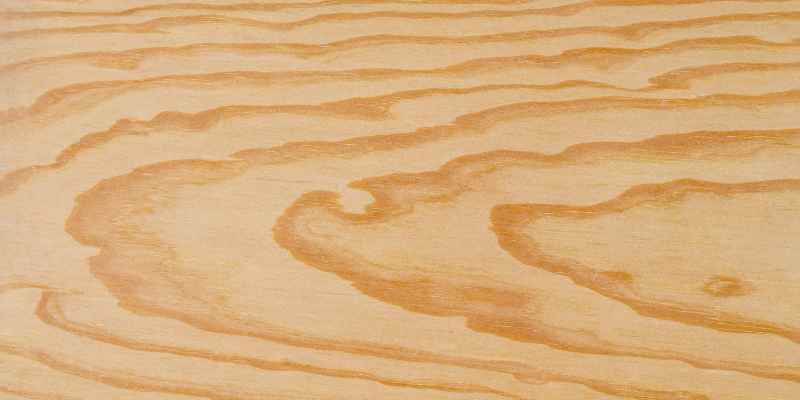To raise the grain on wood, simply spray the wood with tap water. Allow the moisture to rest for a few minutes, causing the grain to swell.
This technique enhances the wood’s natural texture and appearance. Raising the grain on wood is a simple process that enhances the natural look and texture of the wood. This method involves spraying the wood with water, causing the grain to swell and create a textured effect.
By following this technique, you can achieve a more pronounced wood grain, which can enhance the overall look of your woodworking projects. Whether you are a seasoned woodworker or just starting out, understanding how to raise the grain on wood can elevate the quality and visual appeal of your finished pieces. This guide will provide you with the necessary steps to successfully raise the grain on wood and achieve professional-looking results. Understanding this process can help you take your woodworking skills to the next level and create stunning, textured wood finishes that stand out.
Understanding Grain Raising
To raise the grain on wood, start by applying water to the surface until it’s saturated, allowing it to rest for a few minutes. The moisture will naturally raise the grain, enhancing the wood’s texture. This technique prepares the wood for a final sanding and finish, bringing out the natural characteristics of the grain.
Grain raising is a natural process that occurs when water or moisture is applied to wood, causing the wood fibers to swell and stand up. This results in a rough or raised texture on the wood’s surface. Understanding grain raising is essential for achieving a smooth and professional finish on wood projects. Knowing the causes and effects of grain raising can help you take appropriate measures to control and enhance the wood’s surface.
Causes Of Grain Raising
1. Moisture: When wood comes in contact with moisture, either from water or humidity, the wood fibers absorb the moisture and swell, leading to grain raising.
2. Water-Based Finishes: Applying water-based finishes to wood can also cause grain raising, as the moisture in the finish can lead to swelling of the wood fibers.
Effects Of Grain Raising
1. Rough Texture: Grain raising creates a rough and uneven surface texture on the wood, which can affect the appearance and feel of the finished project.
2. Difficulty in Finishing: Grain raising can make it challenging to achieve a smooth and flawless finish on wood, as the raised fibers can interfere with the application of stains and finishes.
To prevent or manage grain raising, it’s essential to understand its causes and effects. By addressing the root causes and employing appropriate techniques, you can effectively raise the grain on wood and achieve the desired finish.
Techniques To Raise The Grain
Raising the grain on wood is an essential step in the finishing process that helps achieve a smooth and flawless surface. By intentionally raising the grain, you create a textured effect that enhances the natural beauty of the wood. There are various techniques to raise the grain, including using water and applying oil-based finishes. Let’s take a closer look at each technique:
Using Water To Raise Grain
One of the simplest and most effective ways to raise the grain on wood is by using water. This technique works well on both unfinished and finished wood surfaces. To start, spray or brush water onto the entire surface of the wood, ensuring it is saturated. Allow the water to sit for a few minutes, and you will notice the moisture starting to raise the grain. The wood fibers will swell and create a textured surface.
Once the grain has been raised, lightly sand the wood using fine-grit sandpaper. This step helps smooth out any roughness and prepares the surface for further finishes or coatings. After sanding, wipe away any dust or residue using a clean cloth before proceeding to the next step in your finishing process.
Applying Oil-based Finishes
When it comes to bringing out the natural characteristics of wood grain, applying oil-based finishes is an excellent choice. Oils such as Tung oil, Walnut oil, or double-boiled Linseed oil penetrate the wood, enhancing its color and grain pattern.
To apply an oil-based finish, ensure the wood is clean and free from any contaminants. Using a brush or rag, evenly apply a thin coat of the oil onto the surface. Allow the oil to penetrate the wood for a specific period of time, as indicated on the product label. Once the oil has absorbed, wipe off any excess using a clean cloth. Let the wood dry thoroughly before applying additional coats, if desired.
Note that the number of coats and the drying time may vary depending on the specific oil-based finish you are using. Always follow the manufacturer’s instructions for best results.
In conclusion, raising the grain on wood is a crucial step in achieving a smooth and textured finish. By utilizing techniques such as using water and applying oil-based finishes, you can enhance the natural beauty of the wood and create a stunning end result.
Preparation Before Raising Grain
Raising the grain on wood is an essential technique to achieve a smooth and professional finish. Whether you’re working on a woodworking project or preparing wood for staining, raising the grain helps to remove any roughness and imperfections on the surface. However, before you can start raising the grain, there are a few important steps you need to take to ensure the best results. In this section, we will cover the key aspects of preparation before raising grain.
Choosing The Right Wood
Before you begin the process of raising the grain, it’s crucial to choose the right type of wood. Different types of wood have varying levels of grain density, which affects how well the grain will raise. Hardwoods such as oak and maple tend to have a denser grain structure, making it easier to raise the grain efficiently. Softwoods like pine or fir may require more time and effort to achieve similar results.
Surface Preparation
Surface preparation plays a vital role in the effectiveness of raising the grain. Properly preparing the wood surface ensures that the grain can be lifted evenly without causing any damage or inconsistencies. The following steps should be taken to prepare the surface:
- Smooth out the wood: Start by sanding the wood surface using progressively finer grit sandpaper. This will help remove any roughness or unevenness, creating a smooth canvas for the grain to raise.
- Clean the surface: After sanding, make sure to remove any dust or debris from the wood. You can use a tack cloth or a vacuum cleaner to ensure the surface is free from any particles that may interfere with the raising process.
- Moisten the wood: To prepare the wood for grain raising, you need to moisten the surface. This can be done by lightly misting the wood with water or using a damp cloth to wet the surface. Make sure not to oversaturate the wood, as excessive moisture can lead to warping or damage.
By properly preparing the wood surface before raising the grain, you’ll create the ideal conditions for the grain to lift, allowing for a more even and professional result.
Steps To Raise The Grain
To raise the grain on wood, spray it with warm water to saturate the surface. Allow it to rest for a few minutes, causing the grain to swell. This simple technique enhances the wood’s texture for a more appealing finish.
Applying Water To The Wood
To raise the grain on wood, start by applying a generous amount of tap water to the surface of the wood. The water should be sprayed or evenly spread across the entire surface to ensure saturation.
Allowing Time For Soaking
After applying water to the wood, allow it to rest for several minutes. A few minutes of soaking will allow the moisture from the water to start raising the grain of the wood, preparing it for the next step of the process.
Drying And Sanding
Once the wood has been given sufficient time to soak, it should be allowed to dry thoroughly. Afterward, the raised grain should be sanded lightly using fine-grit sandpaper. This will result in a smoother and more even wood surface, ready for further finishing.
Enhancing Wood Grain

Elevate the wood grain by lightly dampening the surface with water, allowing it to swell prior to sanding. This technique enhances the wood’s texture and appearance for a smoother finish. Apt for preparing wood before applying oil-based finishes to emphasize its natural beauty.
Using Various Oils For Enhancement
Are you looking to enhance the natural beauty of wood grains? Enhancing wood grain can be achieved through various oils such as Tung oil, Walnut oil, or double boiled Linseed oil. These penetrating oils bring out the.
Wood Finishing Techniques
highlight the beauty of the wood. Utilizing different oils and finishes can add depth and richness to the wood grain, creating a stunning visual impact.
Preventing Grain Raising
Grain raising occurs when moisture causes wood fibers to swell and lift, resulting in a rough surface. However, you can take preventive measures to minimize this issue.
Humidity Control
Controlling the humidity levels in your workspace is crucial to prevent grain raising in wood. High humidity can cause the wood to absorb moisture, leading to grain expansion. Maintain optimal humidity levels between 40-60% to minimize this effect.
Proper Finishing Methods
Using appropriate finishing methods can help prevent grain raising. Seal the wood with a pre-conditioner or sanding sealer before applying the final finish. This seals the wood surface and reduces moisture absorption, thus minimizing grain raising.
Conclusion & Recommendations
To finish off the process of raising the grain on wood, it is essential to thoroughly sand the wood once the grain has raised and then apply a suitable wood finish. The raised grain will allow the wood to absorb the finish more evenly, leading to a smoother and more durable surface.
For best results, recommendations include using a penetrating oil like Tung oil or double boiled Linseed oil to enhance the natural characteristics of the wood grain.
Summary Of Techniques
When it comes to raising the grain on wood, there are a few key techniques you can use to achieve the desired textured effect. The first method involves using tap water to saturate the surface of the wood, allowing the moisture to raise the grain naturally. Another popular approach is to use oil-based finishes like Tung oil, Walnut oil, or double boiled Linseed oil, which can bring out the natural characteristics of the wood grain.
Tips For Successful Grain Raising
- Spray the wood surface with tap water, ensuring it is saturated but not soaked.
- Allow the moisture to rest for a few minutes.
- Observe the grain raising effect, with the wood surface starting to feel like peach fuzz.
- When using oil-based finishes, apply a penetrating oil such as Tung oil or Walnut oil to enhance the wood grain.
- Consider using double boiled Linseed oil for a protective and glossy finish.
- Experiment with different wood species and types of oil to achieve the desired grain raising effect.
- Always sand the wood surface before and after raising the grain to ensure a smooth and even texture.
- Test the technique on a small inconspicuous area before applying it to the entire wood piece.
- Apply the grain raising technique evenly and consistently across the entire surface for a professional-looking result.
- Take your time and be patient during the process to achieve the best possible textured grain effect.
Raising the grain on wood is a simple yet effective technique that can add depth and character to your woodworking projects. By using tap water or oil-based finishes, you can enhance the natural grain patterns and create a visually appealing textured surface. Remember to sand before and after raising the grain, and experiment with different wood types and oils to achieve the desired effect. Take your time, be patient, and enjoy the process of bringing out the beauty of wood grain in your creations.

Frequently Asked Questions On How To Raise The Grain On Wood
What Can I Use To Increase Wood Grain?
To increase wood grain, simply spray the surface with tap water until it is saturated. Let it rest for a few minutes, and the moisture will naturally raise the grain. You can also use oil-based finishes like Tung oil or Walnut oil to enhance the natural characteristics of wood grain.
What Brings Out The Grain In Wood?
To bring out the grain in wood, you can use water-based or oil-based finishes. Using a penetrating oil like Tung oil or Walnut oil enhances natural wood characteristics. To increase wood grain, simply spray the board with tap water, let it rest, and watch the grain naturally rise.
What Causes Wood Grain To Raise?
Wood grain is raised when the wood absorbs moisture, causing the cells in the wood to swell and protrude. This can happen from humidity or water exposure. To raise the grain intentionally, spray the wood with tap water and let it sit for a few minutes.
How Do You Add Grain To Wood?
To add grain to wood, dampen the surface with water and let it sit to raise the grain.
Conclusion
Raising the grain on wood is a simple process that can enhance the finish and appearance of your project. By applying water and allowing it to soak into the wood, you can achieve a textured, raised grain that adds depth and character.
Experimenting with different techniques such as using oil-based finishes or creating faux wood grain patterns can also yield unique and stunning results. With the right knowledge and tools, you can elevate your woodworking projects to new levels of craftsmanship and artistry.


